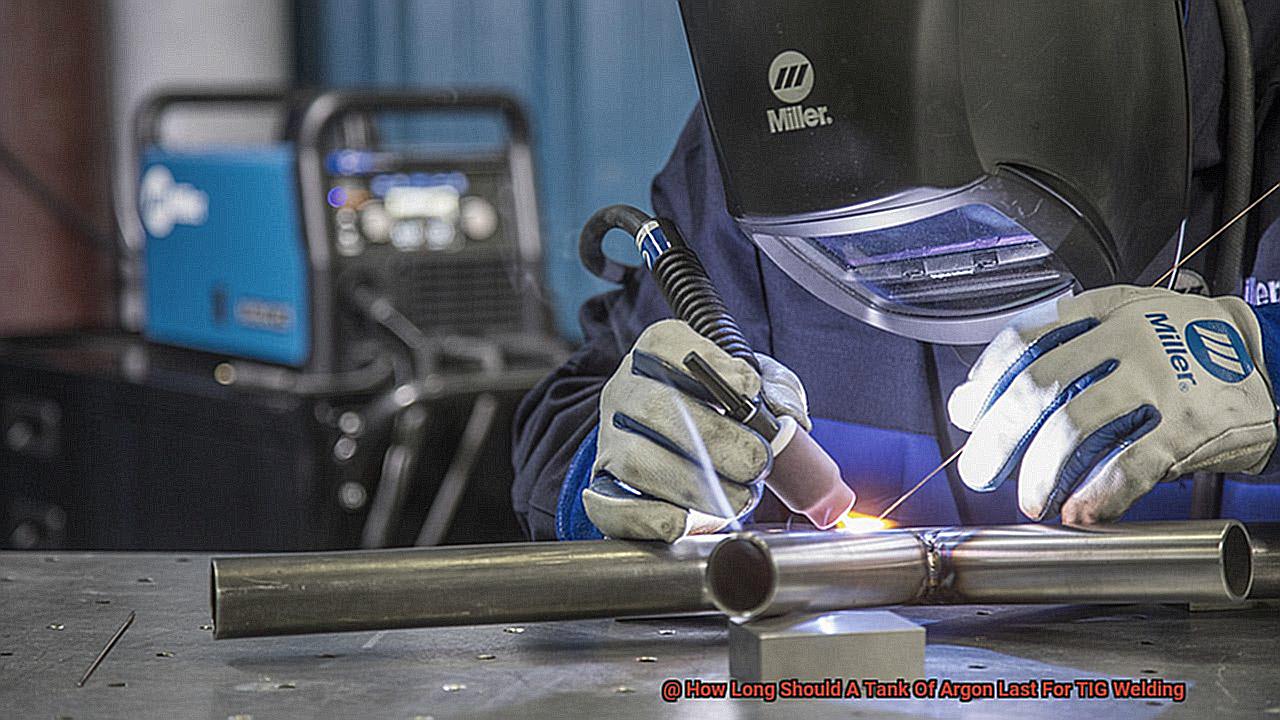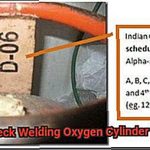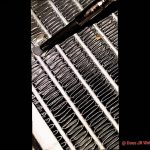Picture this: you’re in the middle of a complex welding project, and you need to have precise control over your welding torch. You’ve set up all your materials and adjusted your settings, but just a few minutes into welding, disaster strikes – your gas tank runs out. This can be an incredibly frustrating experience that can easily be avoided by understanding how long a tank of argon should last for TIG welding.
Argon gas is an essential component in Tungsten Inert Gas (TIG) welding. It protects the weld from oxidizing and prevents contamination. The argon gas is supplied in a pressurized tank, and the amount used varies depending on several factors such as metal thickness, welding amperage, and skill level.
As a welder, it’s crucial to maximize the lifespan of your argon tank to avoid interruptions during projects. But how long can you expect your argon gas to last before needing a replacement cylinder? The answer depends on various factors that we’ll discuss in this blog post. We’ll also provide tips on how you can extend the life of your argon tank to save time and money on future projects.
So, let’s get started.
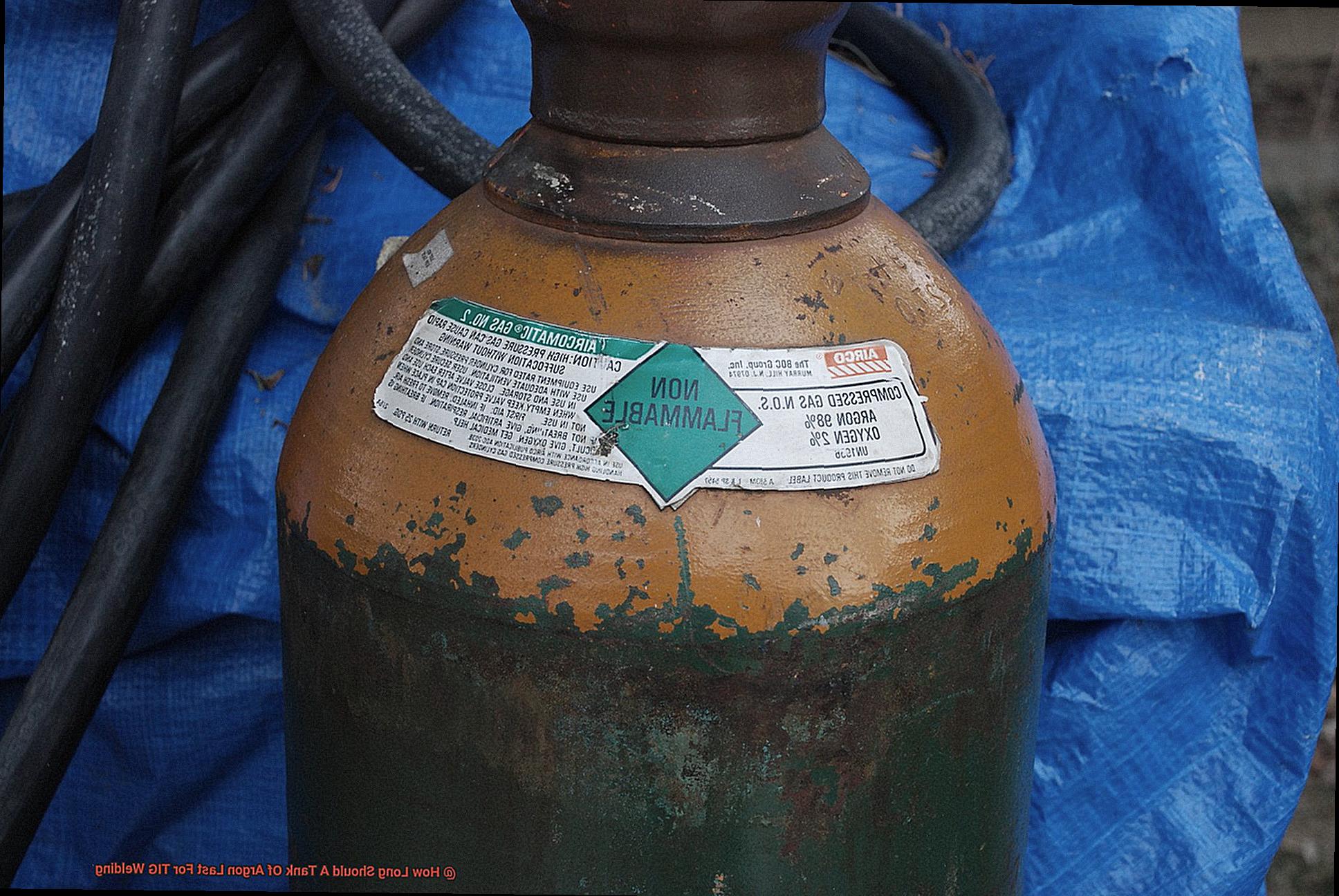
Factors that Determine How Long a Tank of Argon Lasts
Contents
The answer depends on several factors, and here is what you need to know to estimate your tank’s lifespan.
Tank Size
One of the most important factors to consider is the amount of argon gas needed for your job. Typically, an 80 cubic feet (cf) tank is sufficient for 2-3 hours of welding time. However, keep in mind that this can vary based on factors such as the thickness of the metal being welded and your chosen welding technique.
Storage space and convenience are also key considerations when choosing a tank size. While smaller tanks like a 40 cf tank may be easier to transport and store, they won’t last as long during welding. On the flip side, larger tanks like a 125 cf tank can provide longer welding times but may be harder to move around and store.
Another factor to consider is the pressure at which argon is stored in the tank. Higher pressure tanks can store more gas in smaller sizes, but they may come with a higher price tag and require specialized equipment.
Ultimately, selecting the right tank size comes down to your specific needs and preferences. By weighing factors such as convenience, cost, storage space, and gas requirements, you can make an informed decision that sets you up for successful welding projects every time.
Flow Rate
It is essential to maintain a consistent flow rate to ensure the weld quality is uniform and free from defects such as porosity and oxidation.
The flow rate refers to the amount of gas that exits the tank and flows through the welding torch per minute, measured in cubic feet per hour (CFH) or liters per minute (LPM). For TIG welding with argon, the recommended flow rate typically falls between 10 to 20 CFH or 5 to 10 LPM.
If you don’t maintain the recommended flow rate, it can affect your weld quality and shorten the lifespan of your argon tank. Too low of a flow rate can contaminate the weld with air, while too high of a flow rate can cause turbulence and blow away the shielding gas, resulting in insufficient shielding and oxidation of the weld.
Think of it like adding seasoning to your dish; just like how too much seasoning can ruin a meal, too high of a flow rate can ruin your weld. Similarly, too little seasoning can make a dish taste bland, just like how too low of a flow rate can weaken your weld.
It’s crucial to adjust the flow rate according to your welding requirements and ensure that it remains within the recommended range. This way, you can achieve optimal results while maximizing the lifespan of your argon tank.
Frequency and Duration of Use
As a TIG welder, you know that your argon tank is essential to your craft. But just how long will it last? Well, it all depends on how often you use it and for how long each time. In other words, the more frequently and for longer periods of time you use your TIG welding machine, the faster you’ll run out of gas.
Take two welders with different usage habits, for example. If one welder uses their TIG machine every day for several hours, they’ll need to replace their argon tank more frequently than someone who only uses it once a week for an hour. It’s a matter of frequency and duration of use.
But there’s more to it than that. The duration of each use also impacts how long a tank will last. If you use your TIG machine continuously for several hours, you’ll go through more gas than someone who only uses it intermittently for short periods of time. So even if two welders use their TIG machines with the same frequency, one may need to replace their argon tank more frequently if they use it for longer periods of time each session.
Of course, there’s also the size of the argon tank to consider. Larger tanks contain more gas and can therefore last longer than smaller ones, even with frequent or prolonged use.
Choosing a tank size that suits your specific needs and usage habits is key to maximizing the longevity of your argon supply.
Tips for Conserving Argon Supply
TIG welding is an art form that requires precision, skill, and the right tools. Argon gas is one of those essential tools – it’s the secret weapon that protects your weld from contamination. However, argon can be expensive, and running out of it mid-project can be frustrating. That’s why it’s crucial to conserve your argon supply by following these five tips.
Use the Correct Flow Rate
Using the right flow rate is crucial to conserving your argon supply. Too much flow can waste gas, while too little can cause contamination. The recommended flow rate for TIG welding is between 10-15 cubic feet per hour. By using the correct flow rate, you’ll ensure that you’re not wasting money or compromising the quality of your welds.
Keep Your Torch Close to the Workpiece
By keeping your torch close to the workpiece, you can reduce the amount of argon needed to shield the weld zone. This is because the gas will have less area to cover, allowing you to use less of it. You’ll also notice that your welds are cleaner and more precise.
Use a Smaller Cup Size
Using a smaller cup size can also help conserve your argon supply. Smaller cups require less gas to achieve adequate coverage over the weld zone. This is perfect for those who need to weld in tight spaces or on smaller projects. Using a smaller cup size can save you money while still achieving impressive results.
Check for Leaks
Leaks in your system can cause significant losses in your argon supply. Be sure to check all connections and fittings regularly to ensure there are no leaks. You don’t want to be like a ship with a hole in its hull, taking on water and sinking.
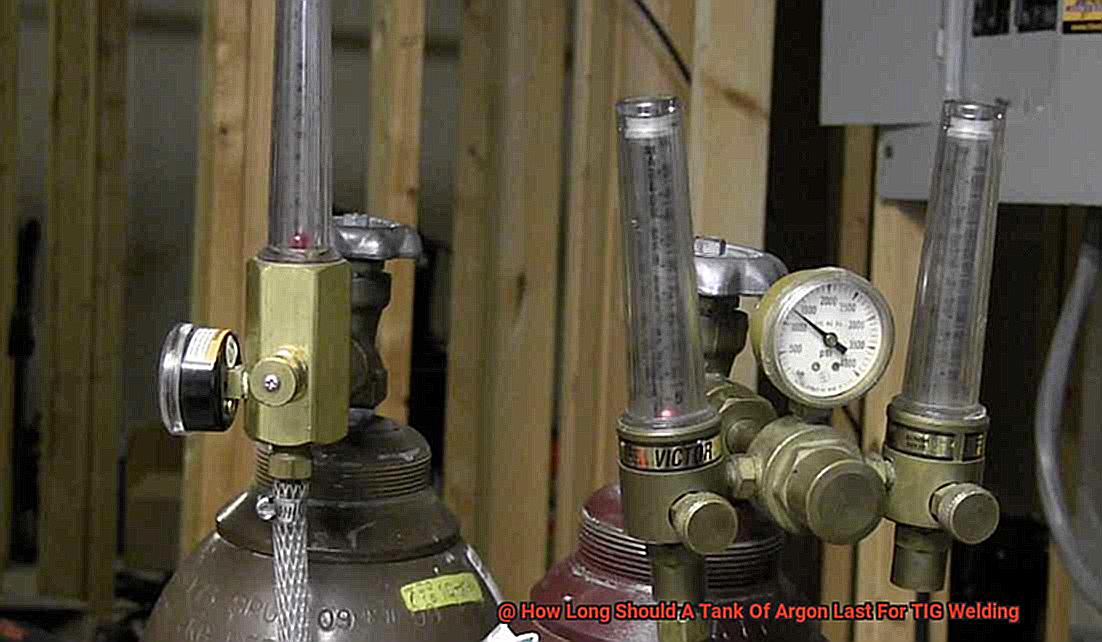
Turn Off Your Gas When Not in Use
This may seem obvious, but many welders forget to turn off their gas when they’re not actively welding. By turning off your gas when you’re taking a break or switching between welds, you can save a significant amount of argon. This simple step can make a big difference in how much argon you use over time.
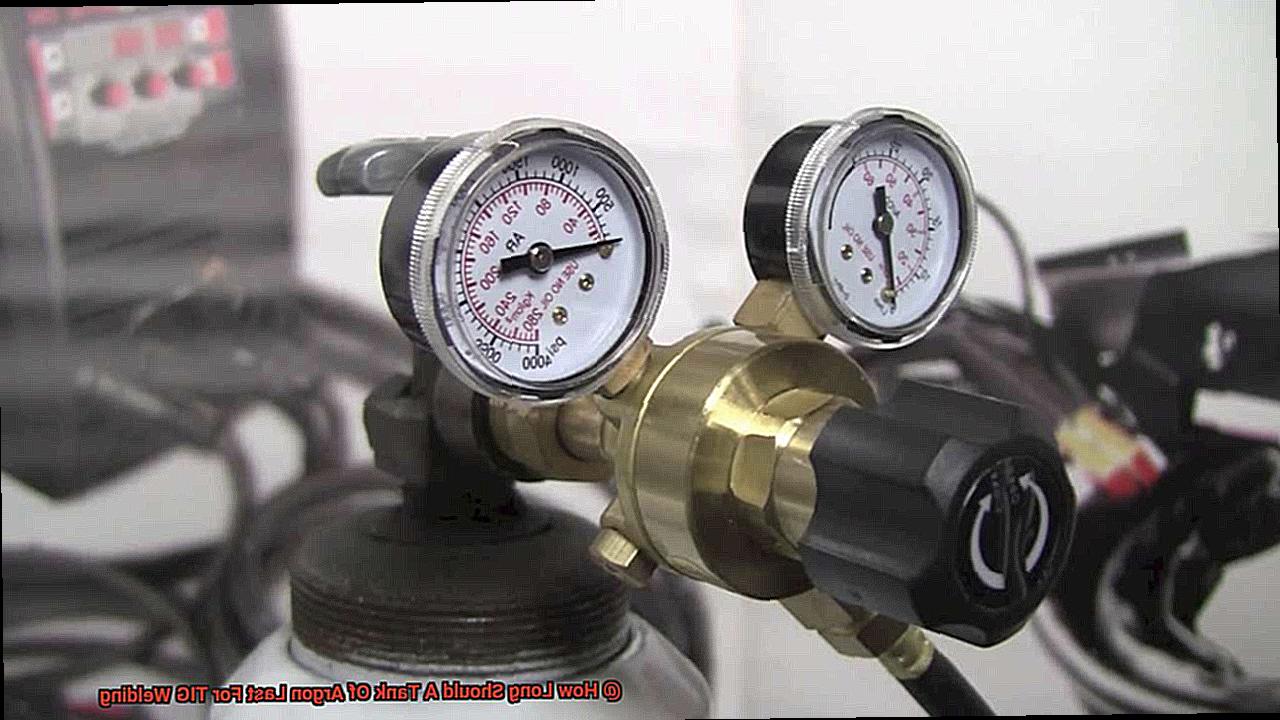
Proper Maintenance and Storage of Argon Tanks
But did you know that proper storage is just as important as maintenance when it comes to prolonging the lifespan of your argon tank? So let’s talk about how you can keep your argon tank in top-notch condition.
First things first, when it comes to storage, make sure you keep your tanks in a cool, dry, and well-ventilated area away from direct sunlight, heat sources, and flammable materials.
Just like how you keep your fruits and vegetables in the fridge to prevent them from spoiling quickly, storing your argon tank correctly can help prevent it from rupturing or exploding due to increased pressure caused by heat and direct sunlight.
Also, make sure you store your tank upright and secure it using a chain or strap to prevent it from falling over. Imagine a fallen-over tank causing significant damage to surrounding objects and people – not a pretty picture.
Maintenance is equally crucial when it comes to prolonging the lifespan of your argon tank. Regular inspection is key to detecting any signs of damage or wear that may compromise its integrity.
Checking the tank’s pressure gauge regularly can help you detect leaks or damages early on. Loose connections can cause leaks that waste your argon gas and reduce the lifespan of your tank.
It is also recommended that you replace regulators every five years and valves every ten years to ensure they are functioning correctly.
24wiLU7JwZs” >
Conclusion
To sum up, knowing how long your argon tank should last for TIG welding is crucial. The duration of your argon tank’s lifespan depends on several factors, such as the size of the tank, flow rate, frequency and duration of use, and type of welding project. By taking these factors into account, you can estimate when it’s time to replace your argon tank to avoid running out unexpectedly.
To conserve your argon supply and save money in the long run, it’s essential to follow a few simple tips. These include using the correct flow rate, keeping your torch close to the workpiece, using a smaller cup size, checking for leaks regularly, and turning off your gas when not in use.
Proper storage and maintenance are also critical for prolonging your argon tanks’ lifespan. Storing them in a cool, dry area away from direct sunlight and heat sources is essential. Regular inspection is also necessary to detect any damage or wear that may compromise its integrity.
By paying attention to these details and taking proper care of your argon tanks through proper storage and maintenance, you can ensure they remain in optimal condition for longer use.
